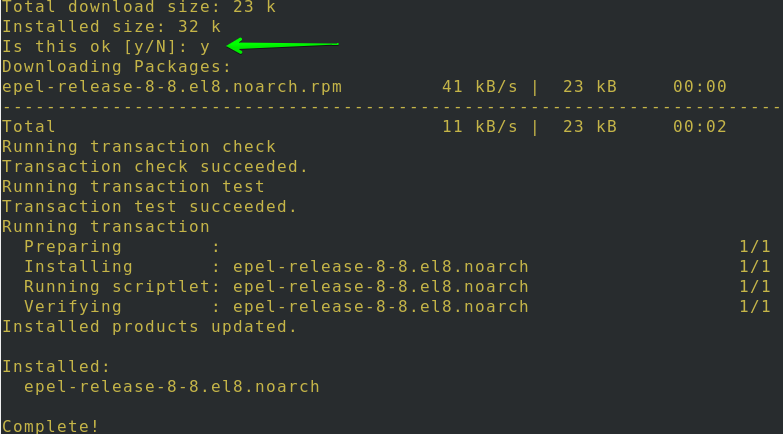

Then access the generated folder and install the binaries on the system: cd ffmpeg-4.3.2-amd64-static/ Now decompress the package: sudo tar xvf
Ffmpeg install centos download#
16:08:59 (37.3 KB/s) - ‘’ saved 1.- Download the latest version of FFmpeg HTTP request sent, awaiting response… 206 Partial Content Inside the folder, we proceed to download the latest version of FFmpeg that at the time of writing this post is 4.3.2 sudo wget -c I will install it in /opt/ but you can choose another one. Then create a folder where the new version of FFmpeg will be located. To avoid any kind of problems, uninstall FFmpeg if you have it installed. So it is convenient to have the latest version available. FFmpeg has a very active development and that’s why it is always improving and adding features focused on speed. Anyway, the community brings us programs like MystiQ that provides a graphical interface to FFmpeg.īut the reality is that we come with something else. What is the problem with FFmpeg? It has no graphical interface and everything has to be done from the terminal. It is so incredibly good and efficient that many known applications already use it for their work as VLC, Handbrake, and so on. By framework, we mean that it contains codecs, tools, and programs that allow you to convert, record, and manipulate audio and video files. So in this post, we will help you with that.įFmpeg is often confused with a codec, but the reality is that it is a multimedia framework.
Ffmpeg install centos how to#
Knowing how to install the latest version of FFmpeg is important if you know how to work with multimedia files. PKG_CONFIG_PATH="/ffmpeg_build/lib/pkgconfig". configure -prefix="/ffmpeg_build" -disable-examples configure -prefix="/ffmpeg_build" -with-ogg="/ffmpeg_build" -disable-shared

LDFLAGS="-L/ffmeg_build/lib" CPPFLAGS="-I/ffmpeg_build/include". configure -prefix="/ffmpeg_build" -bindir="/usr/bin" -disable-shared -enable-nasm configure -prefix="/ffmpeg_build" -disable-shared Git clone -depth 1 git://.net/p/opencore-amr/fdk-aac
Ffmpeg install centos mp4#
#INSTALLING LIBX265 for H265 Mp4 Codec Support #Ĭmake -G "Unix Makefiles" -DCMAKE_INSTALL_PREFIX="/ffmpeg_build" -DENABLE_SHARED:bool=off.

configure -prefix="/ffmpeg_build" -bindir="/usr/bin" -enable-static #INSTALLING LIBX264 for H264 Mp4 Codec Support # configure -prefix="/ffmpeg_build" -bindir="$HOME/bin" Yum install autoconf automake cmake freetype-devel gcc gcc-c++ git libtool make mercurial nasm pkgconfig zlib-devel This gist gives an easy way to install ffmpeg the easy way, just copy and paste the commands below one by one ,


 0 kommentar(er)
0 kommentar(er)
